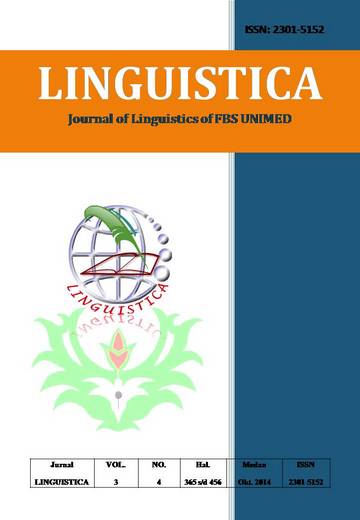SPEECH FUNCTION IN ˜YEAH MAHASISWA™ TWEETS
DOI:
https://doi.org/10.24114/jalu.v3i4.1817Abstract
ABSTRACT This study deals with speech function in ˜Yeah Mahasiswa™ tweets. The research was conducted by using descriptive qualitative method. The data were collected from the twitter account of Yeah Mahasiswa which chosen purposively. The findings of the research show that there are 105 clauses which consist of 4 speech functions, Statement (84), Question (11), Command (6), andOffer (4). The most dominant type of speech function used by Yeah Mahasiswa wasstatement because it tended to give information in its interaction through its tweets. The occurrence of the dominant speech function due to the context of situation, covering field, tenor and mode. Keyword: Speech Function, TwitterDownloads
Published
2014-10-01
Issue
Section
Articles
License
Copyright (c) 2014 Rondang Donna Berhnitha Manalu, Elia Masa Gintings

This work is licensed under a Creative Commons Attribution-ShareAlike 4.0 International License.
Authors who publish with this journal agree to the following terms:
- Authors retain copyright and grant the journal the right of first publication with the work simultaneously licensed under a Creative Commons Attribution License that allows others to share the work with an acknowledgment of the work's authorship and initial publication in this journal.
- Authors are able to enter into separate, additional contractual arrangements for the non-exclusive distribution of the journal's published version of the work (e.g., post it to an institutional repository or publish it in a book), with an acknowledgment of its initial publication in this journal.
- Authors are permitted and encouraged to post their work online (e.g., in institutional repositories or on their website) prior to and during the submission process, as it can lead to productive exchanges, as well as earlier and greater citation of published work (See The Effect of Open Access).
- This work is licensed under a Creative Commons Attribution-ShareAlike 4.0 International License.

